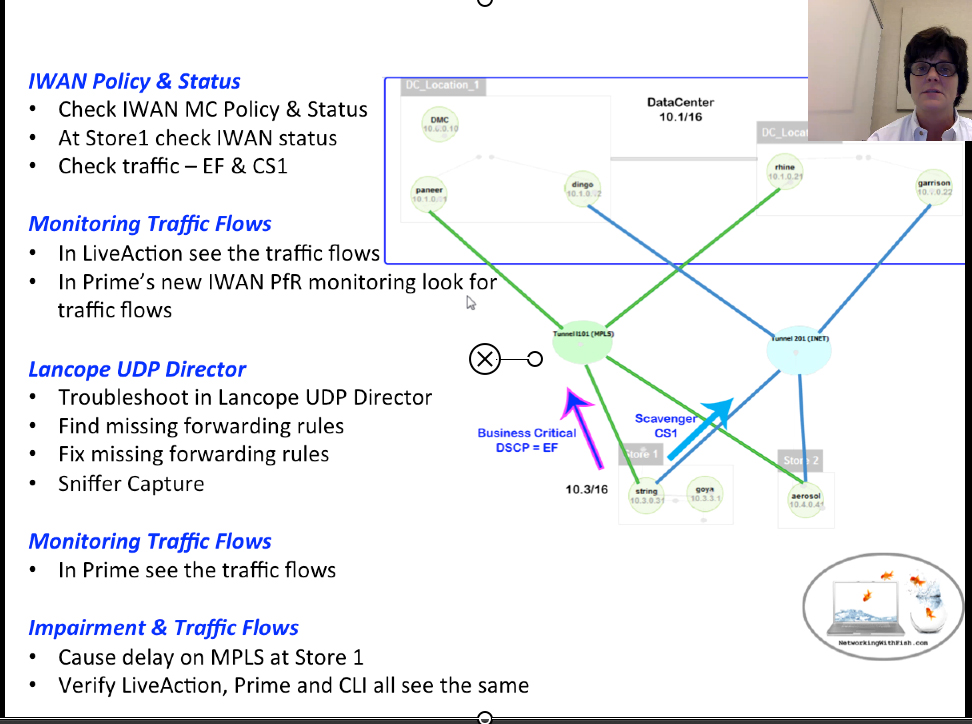Fun in the Lab: IWAN, LiveAction, Prime, UDP Director
Okay… so just some major geeky fun in the lab. I had lots of fun doing it… so why not share it with you and let you in on some geeky fun? Thirty-eight minute YouTube with a PDF guide book.  Little bit of this… little bit of that.
Little bit of this… little bit of that.
- Lancope UDP Director,
- LiveAction,
- Spirent TestCenter,
- IWAN
- Prime.
Breakdown of YouTube sections and corresponding approximate timestamps:
- Overview – start til ~6 minutes in
- IWAN Policy & Status – 6:10 til 14:20
- Check IWAN MC Policy & Status
- At Store1 check IWAN status
- Check traffic – EF & CS1
- Monitoring Traffic Flows: 14:20 til 20:20
- In LiveAction see the traffic flows
- In Prime’s new IWAN PfR monitoring look for traffic flows
- Lancope UDP Director & Troubleshooting: 20:20 – 27:20
- Troubleshoot in Lancope UDP Director
- Find missing forwarding rules
- Fix missing forwarding rules
- Sniffer Capture
- Monitoring Traffic Flows : 27:20 – 28:20
- In Prime see the traffic flows
- Impairment & Traffic Flows: 28:20 – 38:00
- Cause delay on MPLS at Store 1
- Verify LiveAction, Prime and CLI all see the same


 It is time to see through the false sense of security offered by typical deployments.
It is time to see through the false sense of security offered by typical deployments.